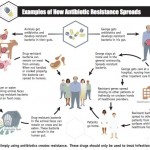 Through the creation of this new agenda, the U.S. government is hoping to build a united front
Through the creation of this new agenda, the U.S. government is hoping to build a united front
In December of 2013, h5n1, a strain of avian flu, was brought into Canada from China, and although the disease didn’t spread, it caused people to be concerned that other health threats may cross over into North America. For this reason, the Centers for Disease Control and Prevention has proposed a 45 million dollar increase in their 2015 fiscal year budget in an effort to strengthen the security of global health. The money is intended to be used in the development of diagnostic testing, creating emergency management units to support outbreak response, building capacity for the detection of undiscovered pathogens, and training in the field of epidemiology. These new changes are meant to create better control of spreadable diseases, and to protect all countries of the world from new contagious diseases that may infect inhabitants.
A New Agenda
Through the creation of this new agenda, the U.S. government is hoping to build a united front against this global enemy of disease by uniting with multiple countries around the world. The above mentioned plan of action is meant to be shared among each country involved, so that not only the United States is protected, but other countries as well. The Nation’s Health Publication writes:
“The agenda will have the U.S. partner with at least 30 other countries over the next five years to prevent, detect and respond to infectious disease threats. U.S. agencies involved in the agenda include the departments of Health and Human Services, State, Agriculture and Defense.”
This agenda will take time and money to implement, which means that although the response will be fast, it will not be immediate, and could take several years to organize.
What This Means
This united front against disease control means that all countries involved will have the ability to not just confine contagious pathogens from crossing boarders, but to effectively communicate with other countries regarding new threats, and provide them with up-to-date information regarding each new strain of virus. The U.S. Department of Health and Human Services announced:
“CDC conducted two global health security demonstration projects last year in partnership with Vietnam and Uganda to strengthen laboratory systems, develop strong public health emergency operations centers, and create real-time data sharing in health emergencies. ”
The information shared may include contagion level, possible cures or medications, and prevention data.
Reasons For The Change
Although this kind of system has been suggested before, it’s never been fully effective, which is why the h5n1 virus managed to slip into North America to begin with. With newer methods of communication and a better grasp on global health security, countries will be better equipped to deal with these problems in the future. Healio.com says:
“In 2012, it was discovered that 80% of countries did not meet the WHO deadline for preparation against infectious disease threats, Holgate said. The Global Health Security Agenda is being launched to accelerate progress in this area and increase the global ability to manage infectious disease challenges.”
This new process may not eliminate the possibility of new diseases crossing boarders and spreading entirely, but it certainly gives the world a much better chance of arming themselves against viruses and preparing for future outbreaks before they arrive. If the medical world is informed of a particular strain of disease and is able to begin preparing medication and treatment to prevent or treat it, there’s a far greater chance of survival should the pathogen reach a new destination. Budget growth and unity in the field of global disease control benefits the world as a whole, and protects each country from external viral threats, as well as internal medical issues.






